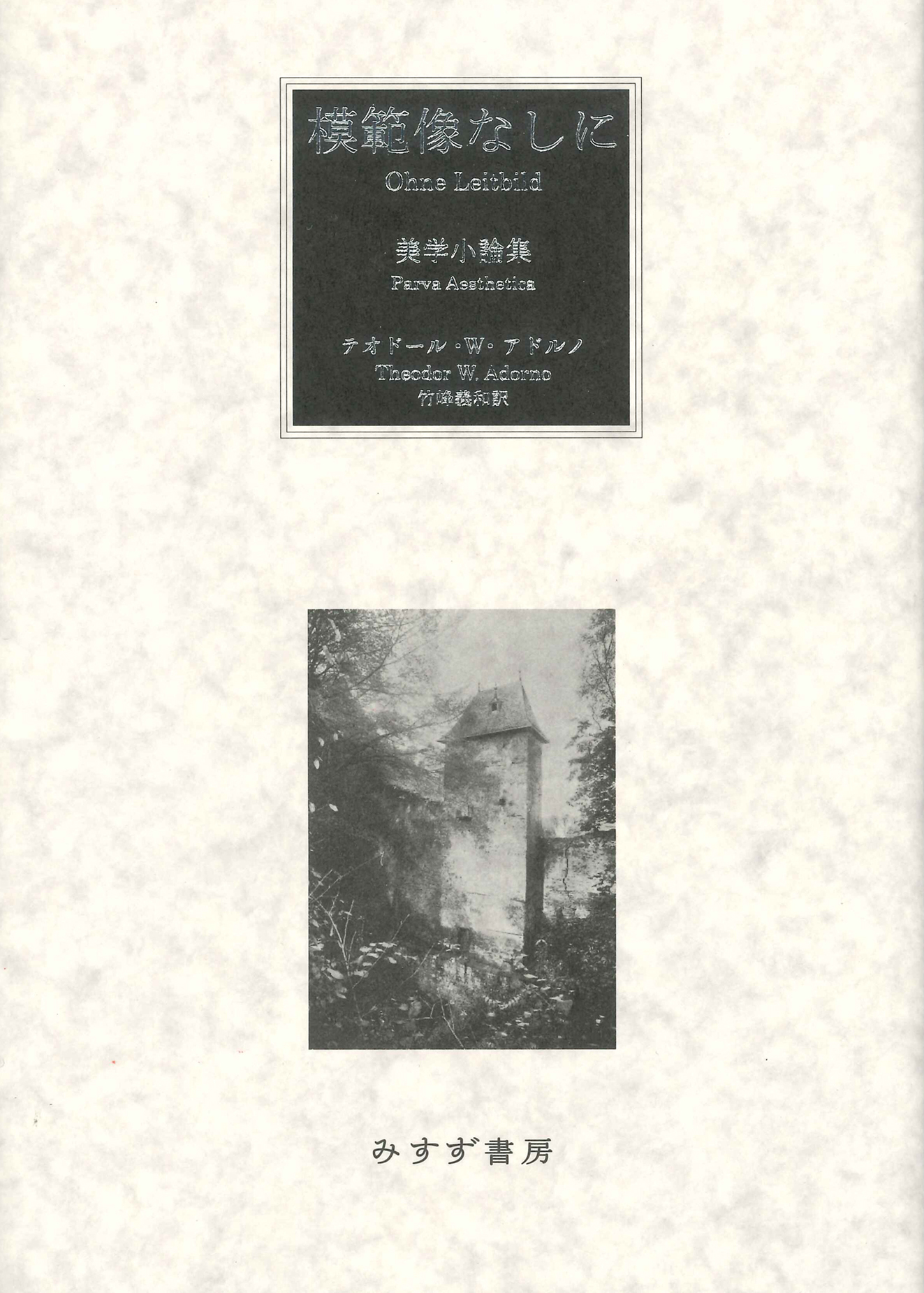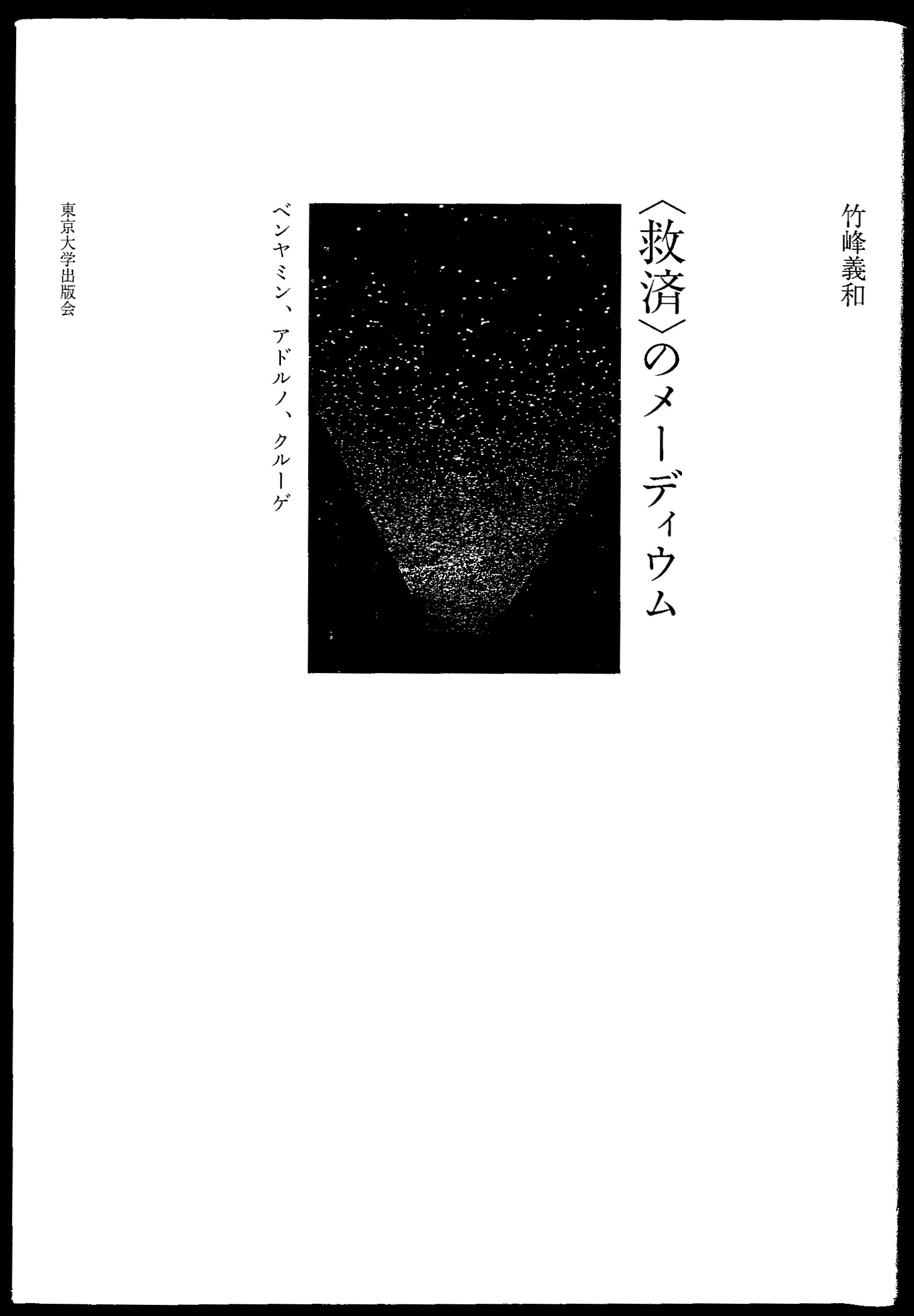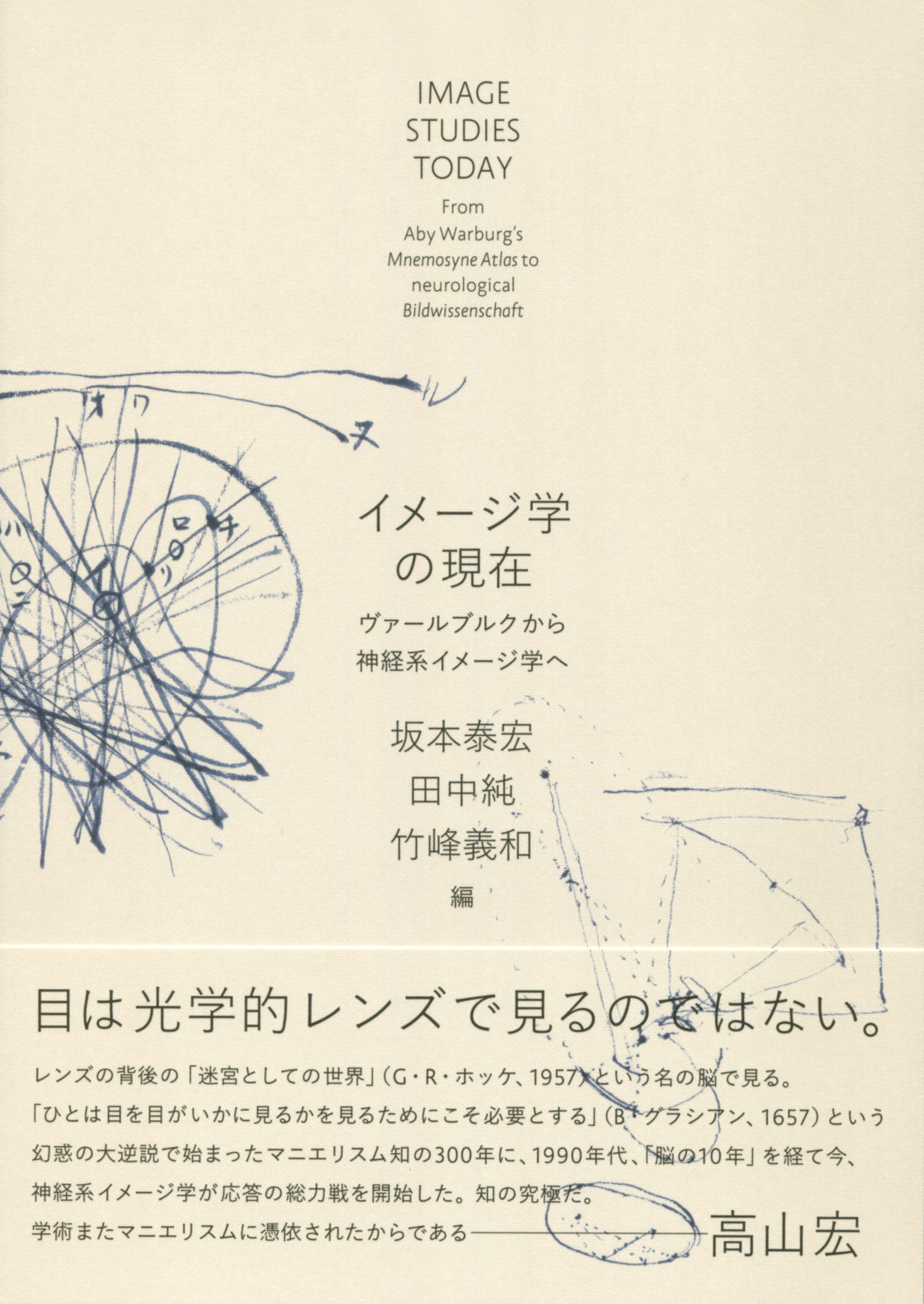
Title
Mohanzou nashi: Bigakusyouronsyuu (Theodor W. Adorno, Without Model Image: Parva Aesthetica)
Size
256 pages, A5 format
Language
Japanese
Released
December 15, 2017
ISBN
978-4-622-08667-3
Published by
Misuzu Shobo
Book Info
See Book Availability at Library
Japanese Page
Without Model Image: Parva Aesthetica is a volume of essays that contains writings on aesthetics and lecture transcripts that Theodor Adorno published while writing his Aesthetic Theory. It is well known that in Adorno's philosophy of art, music holds a privileged status. However, apart from a vehement criticism of baroque music, the texts included here contain no musicological writing, and the majority of the texts concern genres or topics seemingly unrelated to his aesthetic concerns, such as painting, architecture, film, or art management. In this collection, Adorno does not always develop abstract and idealistic arguments, but instead focuses on very concrete topics, such as the French Impressionists, banal hotel paintings, the functionalism of Adolf Loos, Charlie Chaplin, New German Cinema, the theater of the absurd, or happenings. It seems that in these texts, he seeks to reconsider the scope of his aesthetic ideas by addressing topics besides music or literature. Adorno's aesthetic thought tends to be categorized as a culturally conservative defense of advanced art, but these texts show us that there is still untapped potential in his work.
Also featured in Without Model Image are fragmentary texts on various places such as Sils Maria, Vienna, Lucca, and Amorbach, where Adorno spent his summer vacations in his childhood. Unlike Benjamin, who wrote many impressive texts about his childhood memories or travels, Adorno rarely spoke directly of his past, and in this sense these essays constitute exceptions in his oeuvre. But if we consider that in Adorno’s thought, childhood experiences and experiences of perception are always of great importance, it is possible to read thinking from his autobiographical essays included here as pointing towards the essence of Adorno's philosophy. “Nevertheless, only in one place does the experience of happiness make itself felt, that of the unexchangeable” (“Amorbach”). What Adorno has always demanded in his reflections on art is perhaps exactly this “experience of happiness.”
(Written by TAKEMINE Yoshikazu, Associate Professor, Graduate School of Arts and Sciences / 2018)



 Find a book
Find a book



